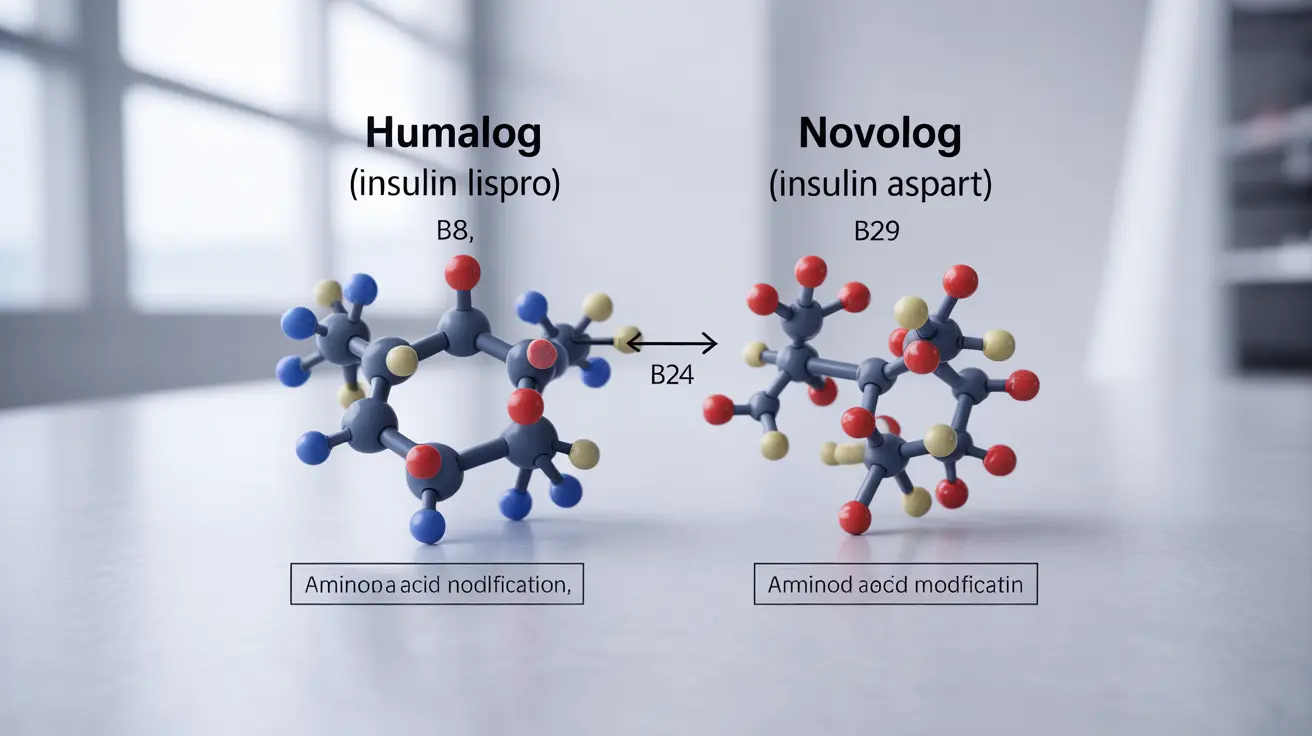For people managing diabetes, understanding the similarities and differences between insulin medications is crucial for effective treatment. Humalog and Novolog are both rapid-acting insulin analogs commonly prescribed to help control blood sugar levels, particularly around mealtimes. While these medications share many characteristics, there are important distinctions to understand.
In this comprehensive guide, we'll explore how these two insulin options compare, their timing, effectiveness, and key considerations for use. This information will help you better understand these medications and support informed discussions with your healthcare provider.
Chemical Composition and Basic Differences
While Humalog (insulin lispro) and Novolog (insulin aspart) are both insulin analogs, they have slightly different molecular structures. Humalog is made by modifying the insulin molecule at the B28 position, while Novolog features a modification at the B29 position. Despite these structural differences, both medications work similarly in the body to lower blood glucose levels.
Onset and Duration of Action
Both Humalog and Novolog are designed to work quickly after injection, mimicking the body's natural insulin response to meals. These medications typically:
- Begin working within 15-30 minutes
- Reach peak effectiveness in 1-3 hours
- Continue working for 4-5 hours total
This rapid action makes them ideal for mealtime insulin coverage, helping to prevent post-meal blood sugar spikes.
Usage Guidelines and Administration
Both insulins should be administered just before meals (within 15 minutes) or immediately after eating. The exact timing may vary slightly between individuals and should be determined with your healthcare provider. Both medications can be delivered via:
- Traditional insulin syringes
- Insulin pens
- Insulin pumps
Safety Profile and Side Effects
Both Humalog and Novolog have well-established safety profiles and similar potential side effects, including:
- Hypoglycemia (low blood sugar)
- Injection site reactions
- Allergic responses (rare)
- Weight gain
Regular blood sugar monitoring is essential when using either medication to prevent and manage these potential side effects.
Age Considerations and Approval
Both medications have been extensively studied and are FDA-approved for use in different age groups. Humalog is approved for use in patients 3 years and older, while Novolog is approved for patients 2 years and older. Both medications have demonstrated safety and effectiveness across age groups when used as prescribed.
Storage and Handling
Both insulins require similar storage conditions:
- Unopened vials/pens should be refrigerated (36°F to 46°F)
- In-use insulin can be kept at room temperature for up to 28 days
- Protect from extreme temperatures and direct sunlight
- Never use expired insulin or insulin that appears cloudy or discolored
Frequently Asked Questions
What is the main difference between Humalog and Novolog, and can I use them interchangeably?
While Humalog and Novolog are very similar in their effects, they have slightly different molecular structures. While they may be interchangeable for some patients, you should never switch between them without explicit direction from your healthcare provider.
How quickly do Humalog and Novolog start working, and how long do their effects last compared to other insulins?
Both medications begin working within 15-30 minutes, peak in 1-3 hours, and last 4-5 hours. This is much faster than long-acting insulins, which can work for up to 24 hours or more.
At what age are Humalog and Novolog approved for use, and is one safer than the other for children?
Humalog is approved for use in patients 3 years and older, while Novolog is approved for those 2 years and older. Both medications have similar safety profiles in children when used as prescribed.
What are the most common side effects of Humalog and Novolog, and how do they compare for safety?
Both medications share similar side effects, primarily hypoglycemia, injection site reactions, and potential allergic responses. Their safety profiles are comparable, with neither showing significant advantages over the other in terms of side effects.
Should Humalog or Novolog be taken right before a meal, and how does the timing affect blood sugar control?
Both insulins should typically be taken within 15 minutes before meals or immediately after eating. Proper timing helps ensure optimal blood sugar control by matching insulin action with food absorption.




